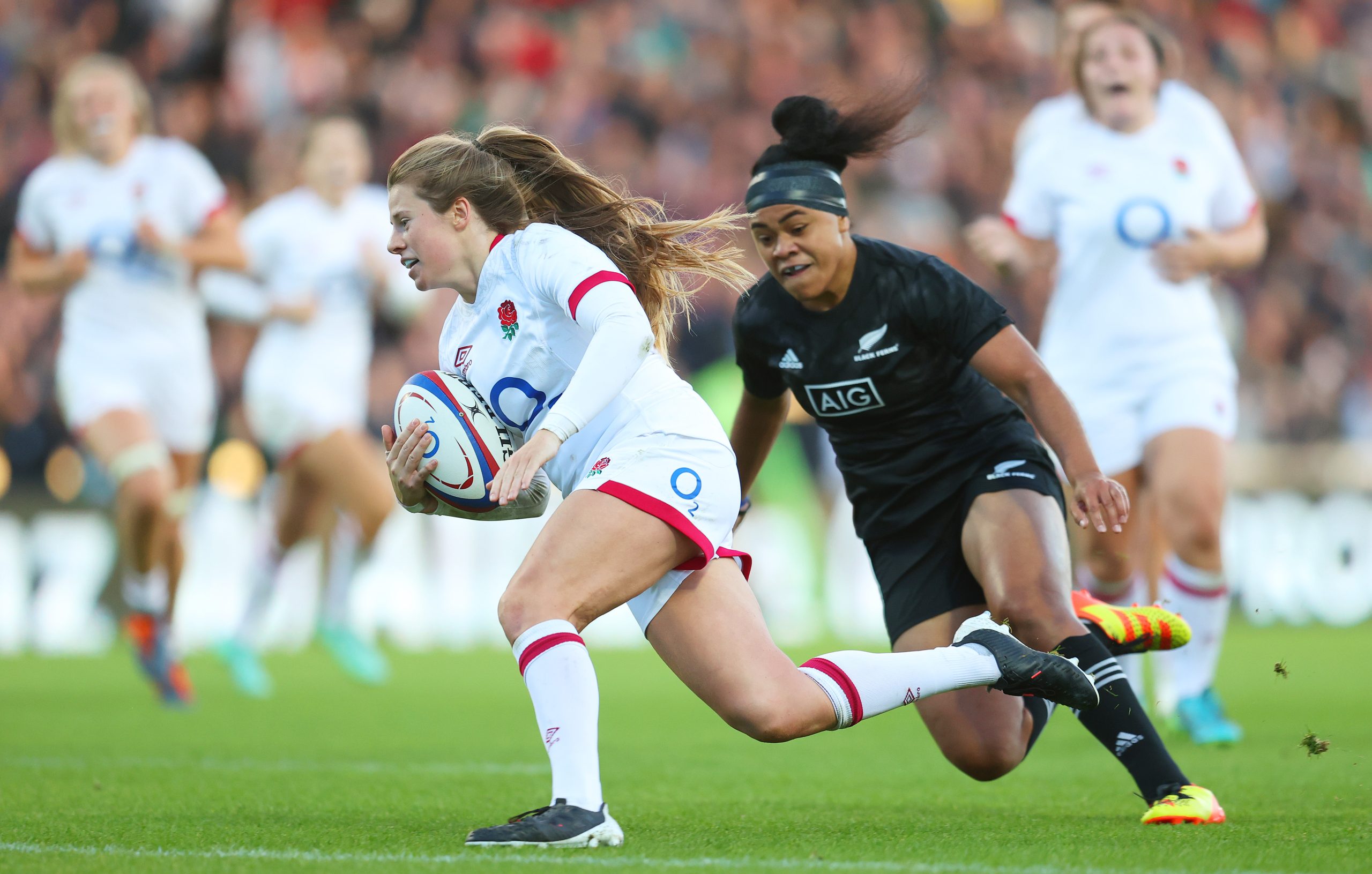Welcome to The Breakdown, our weekly rugby blog for the 2021-22 Autumn Internationals, where we use Opta’s official rugby data to dissect what just happened and why.
The Red Roses against the Black Ferns is as big as it gets in rugby, the best in the North against the best in the South. Between them, they’ve won each of the last seven Rugby World Cups and heading into this pair of Autumn/Spring (depending on which way the water goes down your plughole) fixtures they are the #1 and #2 ranked sides in the world.
The Covid pandemic hit the women’s game hard and international fixtures have been extremely rare in the last couple of years. A condensed Six Nations format at least gave England an opportunity to get some game time, whereas New Zealand have been in hibernation since August 2019. At least in the 15-a-side game that is. There was a chance for some of their cohort to win an Olympic Gold Medal in Tokyo this year, with GB just missing out there, losing to their most local rivals France in the semi-finals then Fijiana in the Bronze medal match.
So, when these fixtures were announced, diaries were cleared and plans changed: this was not one to miss. With the postponed 2021 Rugby World Cup – now set for 2022 – firmly in their sights, both squads are looking to rebuild, strengthen their playing units and help sevens players adjust to the more traditional 80-minute format.
Both countries have seen domestic club competitions in action recently, so although there might be some rust around connections and communications, there shouldn’t be any drops in fitness or skill levels. The Farah Palmer Cup and Premier 15s both give their players a great opportunity for competitive action week in and week out and no doubt play a significant part in the international success both sides enjoy.
For England, one of the biggest challenges they faced coming into this series was how they’d cope without the recently retired Katy Daley-McLean. Having been pulling the strings at fly-half for over a decade, the loss of a player with over 100 caps in such a crucial role was always going to provide a potential stumbling block. It also provides an opportunity though, and with Emily Scarratt also out injured the backline needed a new leader to call the shots and lead the troops.
Decision making is at the heart of what makes a successful fly-half: knowing when to run, when to kick, when to keep it tight and when to unleash the speedsters out wide. Saracens’ Zoe Harrison was given the reins for this first match, and she took her opportunity with open arms.
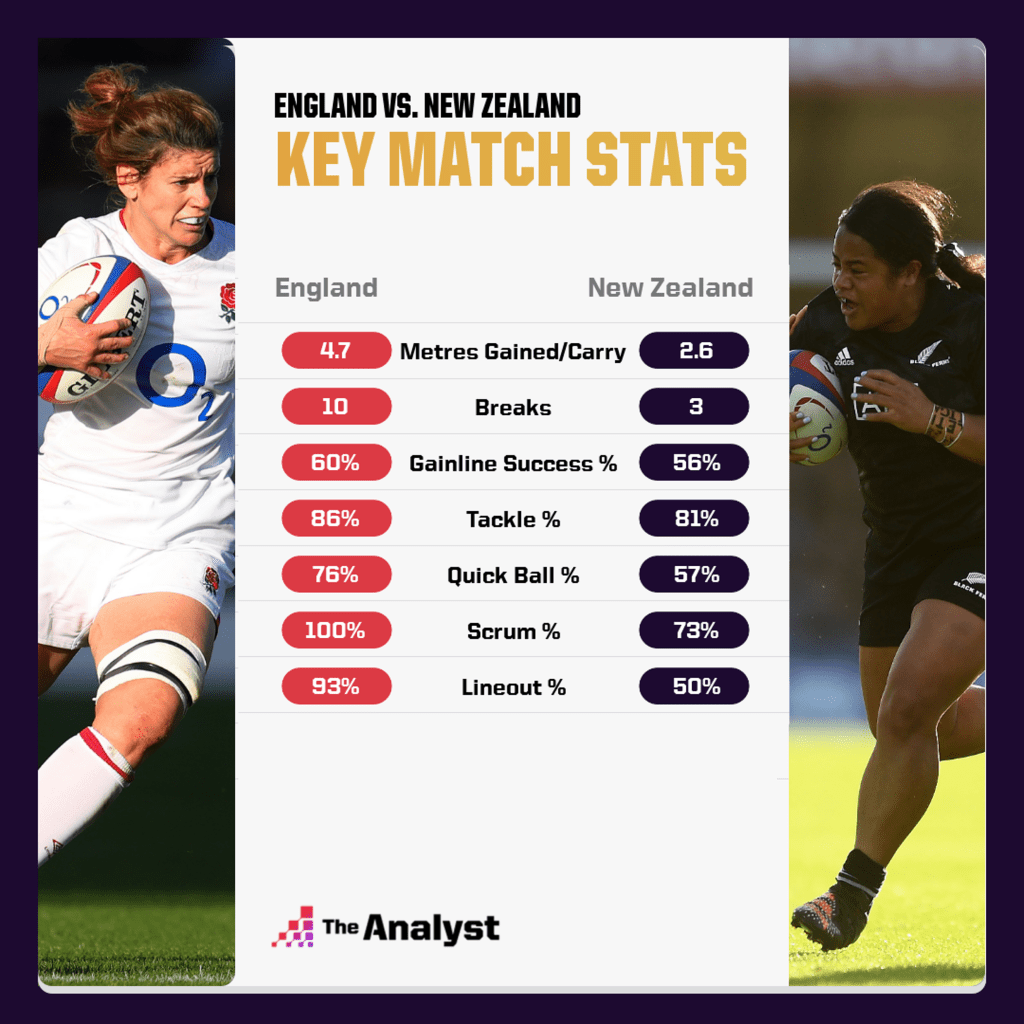
England won the match in sensational fashion, a record-breaking 43-12 victory which saw the hosts in control throughout, dominating at the set piece and in open play. They gained more metres per carry, made more breaks, tackled better, had quicker ball and were ruthless in both attack and defence at the set piece, causing huge disruption to any momentum the Black Ferns looked to build.
England scored seven tries in the match, with Harrison claiming the last of those in added time, gratefully receiving the assist from her replacement Helena Rowland after having shifted one to the centres. Over the course of the 80 minutes, Harrison carried eight times, put boot to ball 14 times and passed 37 times. This variety kept the Black Ferns guessing and the home team on the front foot.
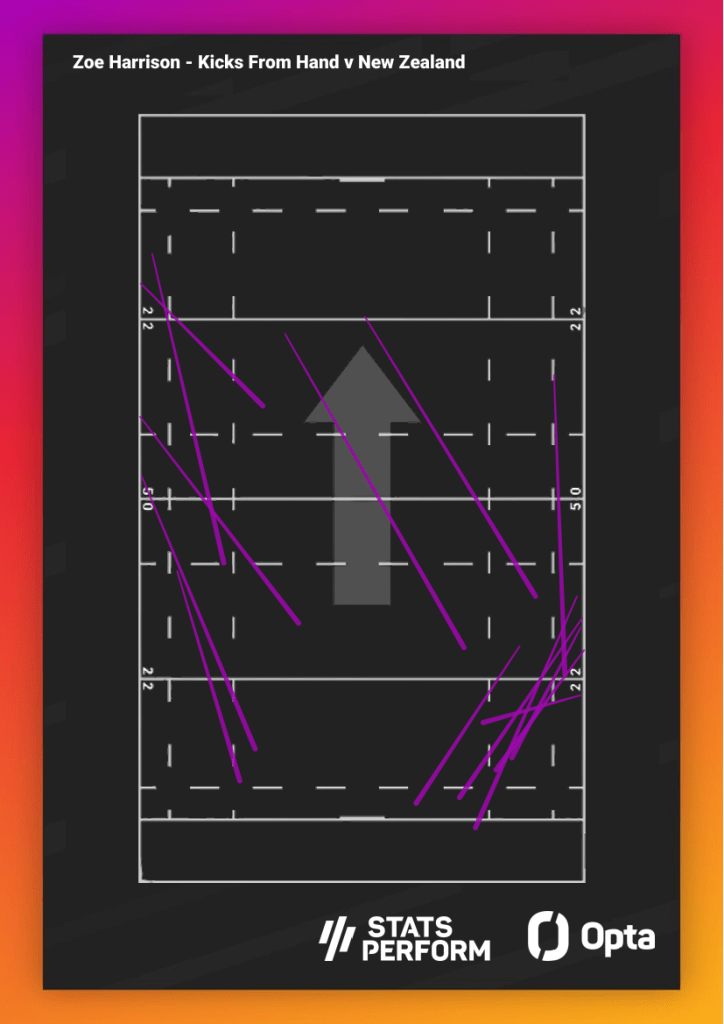
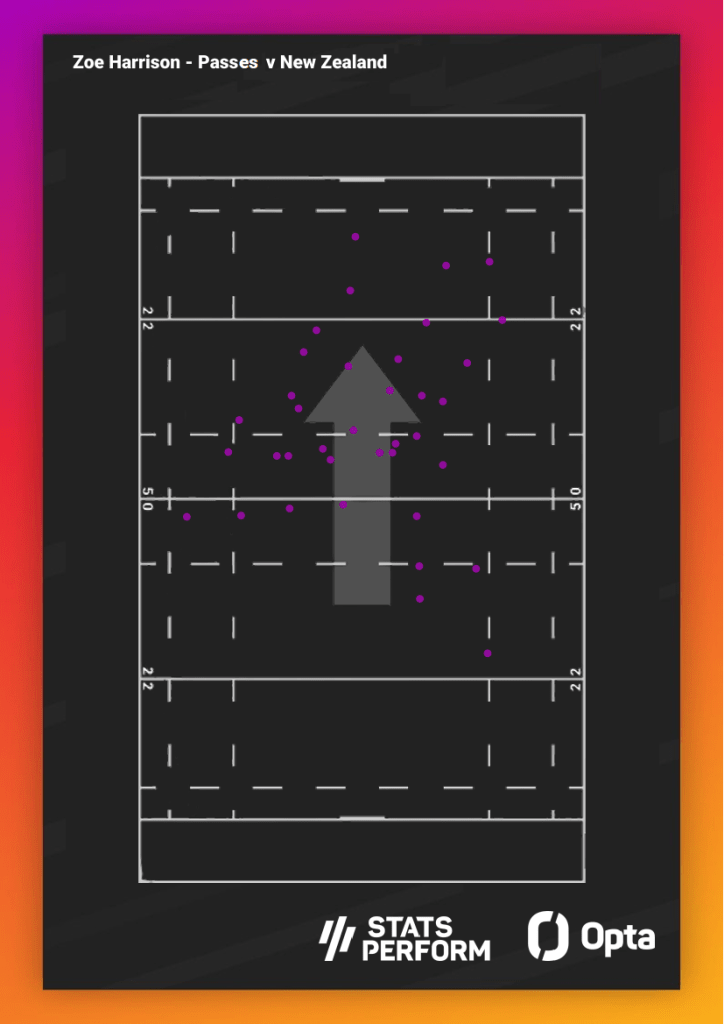
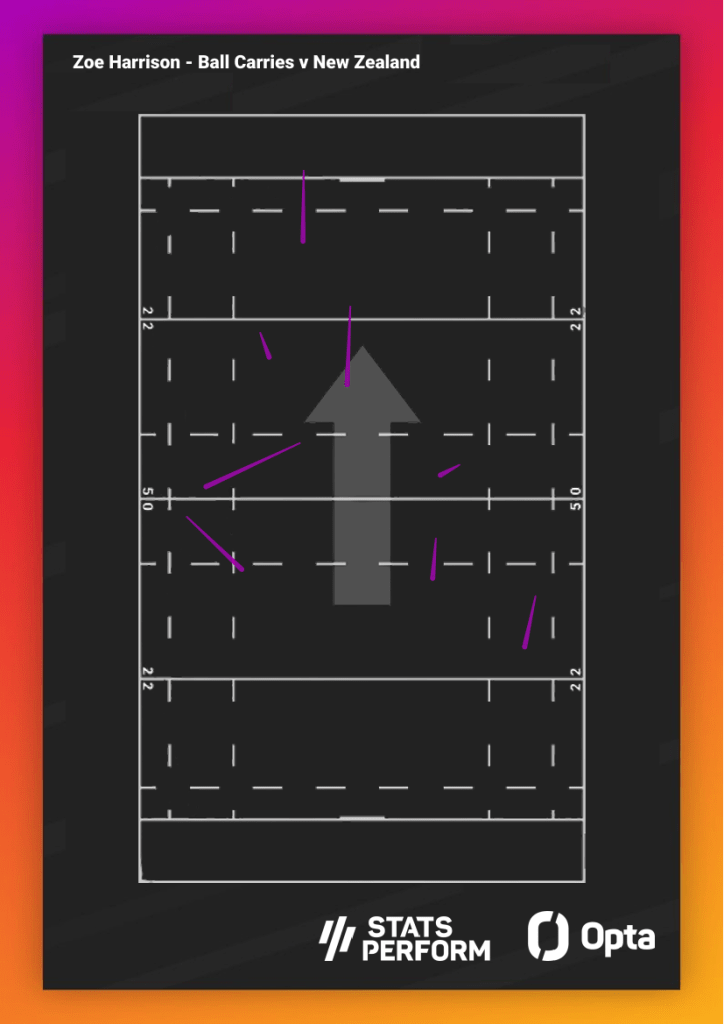
Harrison’s control of England’s exit strategy also seemed to be spot on, and with the knowledge that her forwards had a 50:50 chance of stealing New Zealand’s lineout it gave her the security to back her boot. The visitors chanced their arm by trying to escape their own 22 by carrying it 50% of the time, while England opted for the safer option of kicking out.
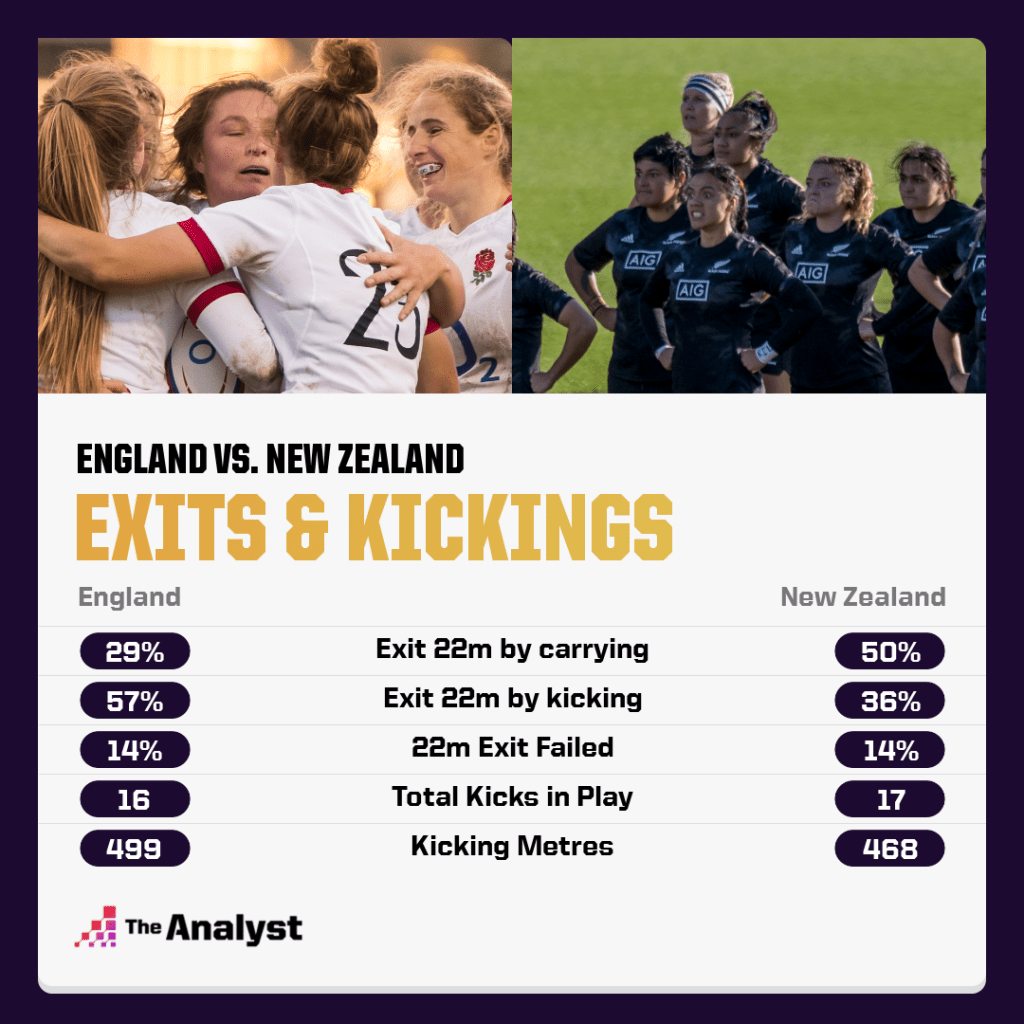
Almost 10,000 spectators were at Sandy Park at the weekend to see the first match of this series and New Zealand don’t have long to regroup and find a way to combat England’s dominance. The Black Ferns don’t lose often though and even more rarely do they lose back-to-back, so expect a reprisal of some sorts and as the scoreboard resets to 0-0 it will be all to play for once again.
Franklin’s Gardens in Northampton will host the second instalment this coming weekend and it will be interesting to see if Harrison is given the reins again or if Rowland is given a shot or at least more than the five minutes she was afforded in Exeter. In a player of the match performance, Harrison has definitely shown she has what it takes to beat the best. Strength in depth is always a critical factor in the long-term success of any side though and there may even be a value in having two playmakers in the midfield, leaning on some of the success that George Ford and Owen Farrell have had in the men’s XV. With Harrison aged just 23 and her replacement, Rowland, just 22, any worries that England could struggle to step up following Daley-McLean’s departure should be short-lived…
Enjoy this? Subscribe to our mailing list to receive exclusive weekly content.
